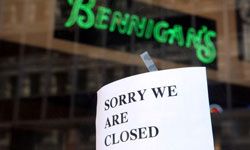Feeling famished? Got a hankering for a Lums hotdog steamed in beer, or a Gino Giant burger drenched in Ameche 35 sauce, the fabled "banquet in a bun"? How about a plate of Minnie Pearl's down-home fried chicken? Chi-Chi's tangy nachos grande? Or maybe you're in the mood for something classier, like Steak and Ale's signature herb-roasted prime rib?
Well, too bad, because those delectable treats were on the menus of national restaurant chains that no longer exist. Whether you're talking about humble burger joints or fancy sit-down dining establishments, the restaurant trade is relentlessly, mercilessly Darwinian. Just as the sabre-toothed tigers and mastodons roamed the land eons ago, there was a more recent time when American roadsides were dotted with orange-roofed Howard Johnson's restaurants and their promise of 27 different ice cream flavors, the gleaming ivory facades of White Tower hamburger stands, and Chi-Chi's imitation Mexican cantinas, among others. Some restaurant chains lost out because of diners' changing tastes, while others were swallowed up by larger competitors. And a few succumbed ignominiously to stock market scandals, unfortunate name choices and an occasional outbreak of food-borne illness. But we also must thank defunct restaurant chains for innovations that revolutionized American casual dining, ranging from the salad bar to special kids' meals.
Advertisement
Here are 10 restaurant chains that are either outright defunct, or -- as in the case of Howard Johnson's --have shrunk to just a few remaining locations.
